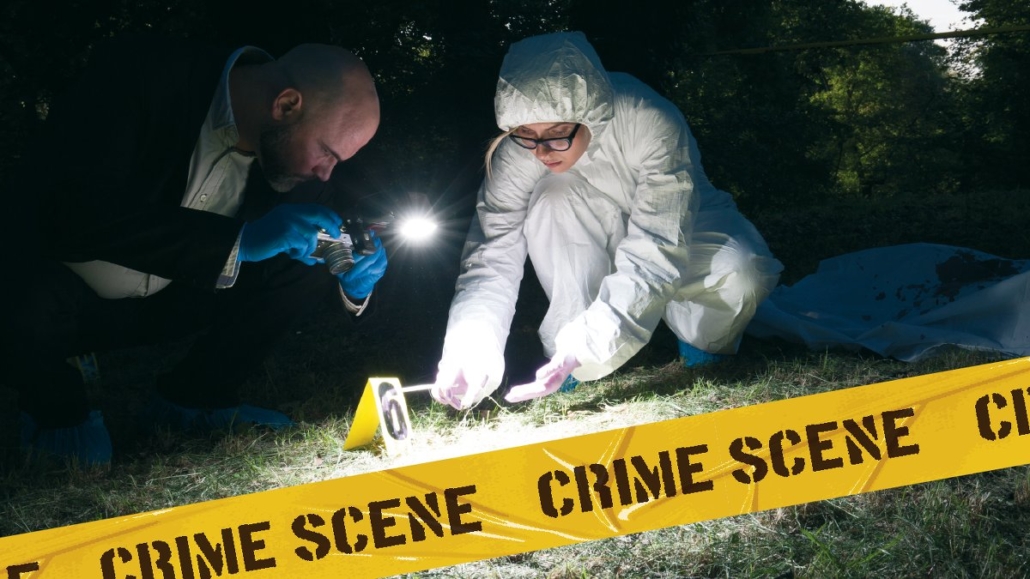The age of forensic DNA phenotyping (FDP) in Europe began in 1999 with the brutal rape and murder of a 16-year-old girl in the Netherlands. As police investigations bogged down and rumours flourished in the local community about asylum seekers from Iraq and Afganistan housed in the area, forensic geneticist Peter de Knijff decided to break Dutch law. With permission from local police, he analysed the DNA in semen found at the crime scene in an attempt to identify the perpetrator’s biogeographical ancestry. That move would open a door into a new era of criminal investigation – drawing up a mugshot based purely on an individual’s genetic code. The move was and would continue to be a controversial act of scientific progress that opened a Pandoras box of ethical and legal implications.
The missing legal framework in Europe
At the time of de Knijffs decision, Dutch law forbade an explicit analysis of culprit DNA to determine ancestry, physical health or other genetically encoded characteristics. Forensic analysis of DNA was restricted to determining a person’s individual identity via a DNA profiling assay. This legal situation remains the standard in many countries in Europe today. While Germany and Belgium, for example, explicitly prohibit deriving physical traits other than gender from DNA, countries like Spain still have no legal provisions, but in practice still restrict DNA forensics to non-coding DNA. Others (like Britain) regularly use the legal vacuum to deduce ethnic origin and hair colour from crime-scene DNA, even though a 2001 resolution from the European Council regarding the exchange of DNA analysis results urges member states to only take non-coding chromosome zones into account. These provide no information about hereditary characteristics.
In the Netherlands, de Knijffs legal violation opened a societal debate that led to an amendment of the law in 2003. It now allows forensic geneticists to search crime-scene DNA for clues to a culprits physical appearance and ancestry, but still strictly prohibits the deduction of any health-related information.
Law still trumps science
The problem is that forensic science continues to trail behind when it comes to exploiting new legal freedoms in the area of genetics. That’s mostly because researchers still don’t know much about the genetics of most externally visible characteristics (EVCs) in humans such as eye, hair and skin colour, hair structure or baldness, height, earlobe shape and so on. We know much more about the genetic basis of human diseases than about the genetics of the normal characteristics of the human appearance, says Manfred Kayser, head of the Department of Genetic Identification at the Medical Center of Rotterdams Erasmus University. Funded in 2004 as a response to the change in legal frameworks, the Netherland’s National Forensic Institute – supported by the university – has sought to create a centre where the necessary basic research could be carried out in the quest to develop useful new tests for forensic application. That’s a unique concept in Europe, since forensic institutes usually have neither the capacity nor budgets to be deeply involved in scientific research. A scholar from the lab of renowned genetic anthropologist Mark Stoneking, Kayser proved an ideal fit for the job. He spent the last decade of his research career building a huge scientific database that collected subtle genetic variations on single nucleotide polymorphisms (SNPs), which are correlated with specific EVCs. And the geneticist has already translated the research into a forensic test format.
The first of these tests, called Irisplex, estimates eye colour based on an individual’s DNA. It has already received approval from Dutch officials for use in criminal investigations. Kayser’s most recent development Hirisplex, which extends the prediction to both eye and hair colour, is still awaiting official approval.
Genetics – we don’t know enough
Aside from these two pigmentation tests, forensic genetics still doesn’t offer investigators much additional information, as we still know too little about genes and predictive DNA markers. Kayser believes, however, that the scientific foundations for predicting baldness, hair structure and skin colour have been largely mapped out, making new forensic tests for these EVCs likely soon. The problem is that – like with the prediction of eye and hair colour – we are only able to differentiate gross categories of skin colour. Fine nuances between blue and grey eyes, for example, or blonde and brown hair, or darker or lighter skin, are in reality smooth transitions. Finding the genetic variations, SNPs or other types of genetic markers responsible for such slight differences will be both very laborious and extremely expensive. The reason for the high costs is that the scientific foundation of any forensic genetic test are genome-wide association studies (GWAS). These analyses scan the genomes of as many people as possible to find correlations between the approximately 15 million human SNPs and a specific EVC (such as height). Twin studies suggest that height is 80% nature and 20% nurture. A recent GWAS of 250,000 individuals found 697 SNPs associated with height – by far the largest genetic dataset of any human EVC. But as it turns out, these hundreds of SNPs still just explain 16% of humanity’s observed height differences.
Tossing a coin
In other words, geneticists still don’t even know enough about the genes involved in normal height development, which clearly makes developing a forensic test impossible. In 2009, genomics expert Yurii Aulchenko tried to predict body height with the 54 height-associated SNPs known at the time – and failed. According to Kayser, prediction values from the study didn’t really beat a coin toss. Currently available genetic knowledge on body height clearly illustrates on the one hand just how much genetic information on height is still missing, and on the other hand that accurate DNA prediction of normal height is not around the corner, and if ever possible will likely involve many thousands of SNPs, Kayser wrote in a recent FDP review (http://dx.doi.org/10.1016/j.fsigen.2015.02.003).
The same is true for other human EVCs. That’s why if US companies like Human Longevity or Parabon Nanolabs claim to be able to reconstruct a snapshot of a culprit’s face from DNA, Kayser is highly sceptical. Especially because these firms have yet to publish peerreviewed papers describing the science behind their predictive technologies. And of course the tests lack any independent validation. Based on currently published and publicly available scientific state-of-the-art, it’s very unlikely that this works, Kayser says. The appearance of a human face is determined by hundreds – if not thousands – of genetic variants, but only about a dozen are known so far, according to the scientist. That said, Kayser still thinks that a reliable, validated DNA-based mugshot might be a possibility in the future. Twins’ faces look very much alike, he reminds. And as their DNA is almost identical, we know that a face’s uniqueness has to be hidden in the genome – although we don’t yet know where.
When it comes to deducing biogeographical ancestry from DNA traces, as the Dutch forensic scientist de Knijff did back at the turn of the millennium, geneticists have grown much more confident. Specific SNPs now allow them to trace ancestry back to the broad continental regions Europe, Africa, East Asia, Oceania or the Americas with a certainty of 99.9%, according to the Joint Trace Commission head Peter Schneider at the University of Cologne. Even though the perpetrator from the 1999 case in the Netherlands has never been identified, de Knijff’s analysis revealed that the murdered Dutch girl was raped by a man from northwestern Europe origin. But Schneider reiterates that a more specific result – pinning crimes to a particular national origin with science – is still not possible. That’s because nationalities and borders have political and cultural, not biological roots. To pinpoint ancestry to certain regions with enough predictability, investigators would have to check thousands of SNPs. That presents a technical problem, he adds, since DNA isolated at crime scenes is usually too fragmented for this kind of analysis.
Clues from the ageing genome
Scientists are at least able to give investigators more precise clues about a suspect’s age based on forensic DNA evidence. Since methylation of the DNA component cytosine changes at certain positions (CpGs) in the genome, this particular marker can be used to predict age with a relatively high degree of probability. In his review, Kayser writes that two CpG markers explained 73% of age variation, and predicted individual ages with an average accuracy of about five years. Looking at more than 100 CpGs leads to a deviation from real age of just over three years, and Schneider concludes that age can be accurately predicted within a range of 4-5 years. He adds that such analyses could already be performed, even within restrictive legislation environments like Germany, because methylation analysis and age deduction reveal none of an individual’s personal information. Age information would be tremendously valuable to investigators, since the predictability of age has a higher criminal and practical value than predictions about eye or hair colour.
DNA – the best witness
Even though forensic DNA phenotyping is still in its infancy as an applicable technology, both Schneider and Kayser expect advances will soon help it develop into a versatile tool for investigators. Next-generation sequencing technologies (NGS) are already making it easier to analyse large numbers of SNPs. Although studies showing the multiplexing analysis of thousands of SNPs via targeted NGS are still pending, over 500 SNPs can already be successfully combined in a single targeted sequencing run using the Ion Torrent Personal Genome Machine, says Kayser. Such tests can also help verify witness testimonies, which are often questionable or subjectively biased. Thats because a results from a forensic DNA phenotyping test comes with a scientifically sound degree of probability. With HIrisplex, for example, investigators can be 95% sure that a perpetrator’s eyes are indeed blue, although predicting grey or green eyes is less certain (approximately 15-30%). Witness statements, on the other hand, provide no empirical data about the true value of a testimony, so the test is at least a solid starting point.
But critics say that overeager police officers might still face difficulties in dealing with the probabilistic nature of FDP results, and could end up on the wrong track if they take current DNA analysis results without a grain of salt. And other uncertainties remain. Tests can for example make predictions about genetically-based EVCs, but a suspect’s external appearance could still easily be changed by cosmetics, plastic surgery, coloured contact lenses, dyed hair, a deep tan or even disease. Hair colour also alters with age, and science still hasn’t developed a tool for predicting exactly how.
Regulating FDP
So FDP results raise both ethical and scientific challenges. Deducing information from DNA about characteristic features has long been a general legal question in its own right. Experts argue that such tests could actually infringe an individuals right to privacy when it comes to administrating their own personal information. This is certainly true for health-related information that even culprits may be unaware off – such as genetic risk factors for disease. When it comes to personal appearance, however, Kayser believes that privacy issues – including the right not to know – don’t apply: This simply is because appearance traits are not only known to the person itself, but to everybody who has ever seen this person, including the police. Kayser therefore argues that in legal terms, FDP is comparable to testimony from a human witness, as it delivers the same type of information that human eyewitnesses do. And since there is no specific law regulating the use of testimony from eyewitnesses, Kayser asks,why does one need it for DNA?
On the other hand, Kayser gives reasons why at least some amount of regulation might be necessary, particularly when it comes to predicting ancestry from DNA. To a certain degree, eyewitnesses can make broad assumptions about a culprit’s descent on a continental level. That information can therefore not be considered private information, Kayser argues: But mixed ancestry such as between continents may not necessarily be visible. Therefore, privacy issues – including the right not to know – could apply for genetic ancestry testing. The respective law in the Netherlands, which is generally considered the most progressive in Europe, doesn’t take this problem into account. Neither does legislation in other EU states that don’t regulate FDP specifically but already do practise ancestry testing in investigations.
In German law, any forensic use of DNA is restricted to non-coding markers. But this leaves a loophole for FDP, according to Kayser, because many SNPs used by FDP analysis are located in such non-coding regions of the genome. A distinction between coding and non-coding parts appears outdated, and should therefore not be used any longer when regulating the application of DNA via legislation, Kayser says.
European legislation needs an update, it seems, as forensic DNA phenotyping is coming whether lawmakers want it or not. Only by setting down the rules for what police investigators should or should not know about a culprit’s genetic predispositions will societies be able to harness these coming technologies to solve crimes.



 Bayer AG
Bayer AG
 Picture from Ferdinand Stöhr on Unsplash
Picture from Ferdinand Stöhr on Unsplash